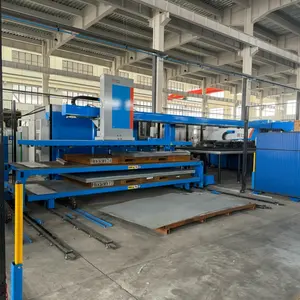
Automobile Exhaust System Components Exhaust Flexible Braid Pipe Flexible Escape Exhaust Flexible Pipes/tubing

OEM Laser Cutting High Precision Custom Tension Exhaust Pipe Assembly Sheet Metal Product Sheet Metal Fabricating














Aluminized steel exhaust pipes are a pivotal component in vehicle exhaust systems, designed to efficiently channel exhaust gases away from the engine compartment. These pipes are engineered to minimize pressure drops and are characterized by their flexibility, boasting a tight radius of curvature for optimal maneuverability. The durability of aluminized steel provides excellent resistance to the corrosive chemicals present in diesel and gasoline exhaust fumes.
The exhaust pipe landscape includes various types such as straight pipes, flex pipes, and tailpipes, each serving a unique function within the exhaust system. Straight pipes are essential for directing gases, while flex pipes accommodate engine movement. Tailpipes are the final exit point for exhaust gases. These components are integral to the automotive exhaust line, ensuring the safe and effective operation of vehicles by connecting different elements of the exhaust system.
Constructed from aluminized steel, these exhaust pipes are not only lightweight but also robust against physical damages like rust, cracks, and punctures. The aluminization process coats the steel with aluminum-silicon alloy, significantly enhancing its ability to withstand high temperatures and corrosion, thereby extending the lifespan of the exhaust components.
Aluminized steel exhaust pipes offer numerous advantages. Their resistance to corrosion ensures longevity, even under harsh conditions. The material's heat-resistance quality maintains structural integrity, preventing deformation under extreme temperatures. Additionally, the reflective properties of aluminized steel contribute to reduced heat absorption, which can enhance the vehicle's overall performance.
Recognizing the symptoms of a deteriorating exhaust pipe is crucial. Indicators such as increased fuel consumption, unusual noises, or the smell of gasoline suggest potential exhaust system breaches. Typically, a straight exhaust pipe may require replacement after approximately 80,000 km, and a tailpipe after 100,000 km. However, these are average estimates and actual conditions may necessitate earlier intervention.
A compromised aluminized steel exhaust pipe can significantly impact vehicle comfort and safety. It can lead to increased fuel consumption and the emission of gases into the passenger compartment, posing health risks. Replacing a faulty pipe is essential for maintaining the vehicle's performance and ensuring the safety of its occupants, while also contributing to environmental conservation by reducing emissions.